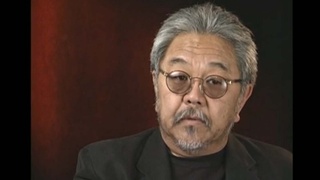Interviews
Laid off for being Canadian
I applied for U.S. government service as a... at army pay. U.S. army pay, which was considerably, far better than what I was making at the oil company. At the oil company, probably I was making about fifteen thousand a year -- a month. Whereas for, with the American thing, I was making oh, probably I was making about a hundred thousand a month. Japanese yen, yeah, or equivalent in dollars. So I worked there for about a year and a half, and then after the peace treaty, after the peace treaty, I was laid off because according to the peace treaty with, between Japan and the States, the only people that can work for the American army were U.S. citizens, not Canadian. So I got laid off, and a year after I got laid off, I worked as an interpreter for a Japanese company trying to land contracts with, contracts for the U.S. army. The work I was doing while I was with the U.S. army as their civilian employee was procurement of supplies for the Korean War.
Date: October 29, 2005
Location: Toronto, Canada
Interviewer: Norm Ibuki
Contributed by: Sedai, the Japanese Canadian Legacy Project, Japanese Canadian Cultural Center
Explore More Videos

Father as prisoner of war in hospital
(1922–2014) Political and civil rights activist.

Family's deportation from Peru to U.S. after the bombing of Pearl Harbor
(1930-2018) Nisei born in Peru. Taken to the United States during WWII.

Dealing with racism within army unit in Korea
(b. 1939) Japanese American painter, printmaker & professor

Getting a job at the British Army camp in Hiroshima
(b.1924) Japanese Canadian Nisei. Interpreter for British Army in Japan after WWII. Active in Japanese Canadian community

Volunteering to serve for the U.S. military in Japan
(1923-2011) Lawyer, MIS veteran, founder of Francis and Sarah Sogi Foundation

Awareness of concentration camps as a Japanese American
(1923-2011) Lawyer, MIS veteran, founder of Francis and Sarah Sogi Foundation

Being stationed in Japan during the American occupation
(1923-2011) Lawyer, MIS veteran, founder of Francis and Sarah Sogi Foundation

Attempts to sign up for military service
(1917 - 2004) Political activist


Appearance vs. Combat Effectiveness
(1919 - 2006) World War II and Korean War veteran



People with talent in the 100th infantry battalion
(1919 - 2006) World War II and Korean War veteran


